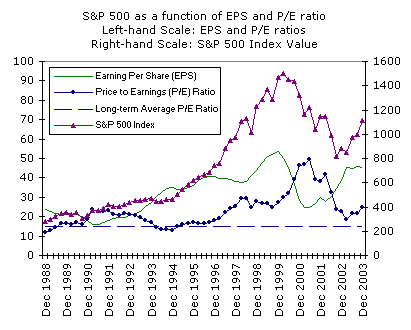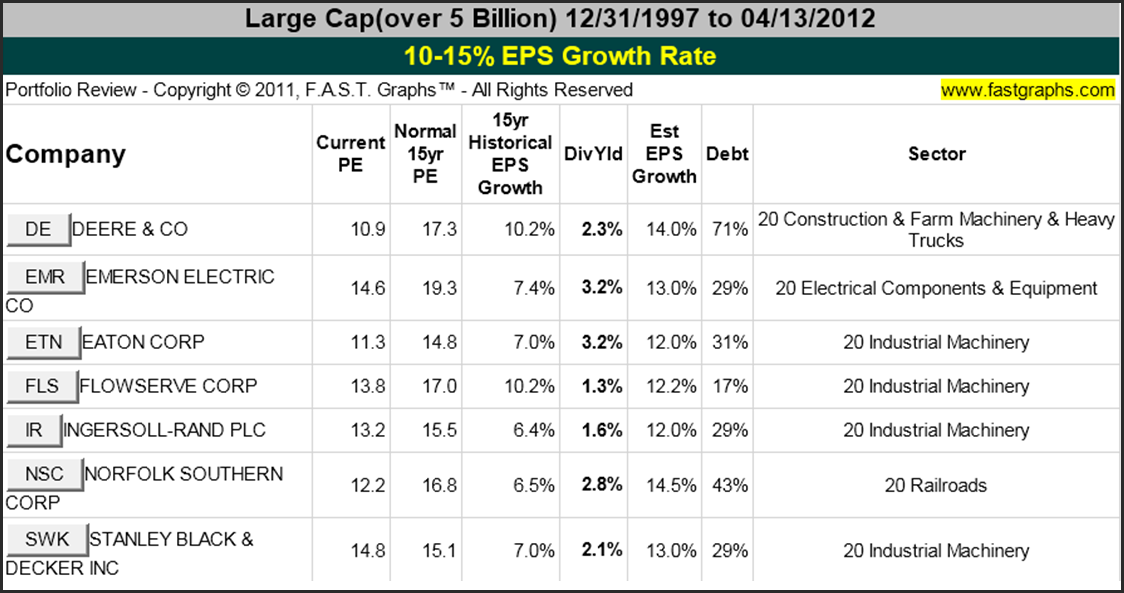How to estimate future EPS growth rates
Post on: 16 Март, 2015 No Comment

One of the most important factors that affects a companys share price is the expected growth rate of the EPS (earnings per share). It logically follows then, that value investors would factor this important piece of information into the determination of a companys intrinsic value. For most valuation techniques, the future EPS growth rate is the most important and influential factor in arriving at an accurate valuation. Fortunately, there are a few simple methods we can use to determine how to estimate the future EPS growth rate. Lets see how.
Relying on the professionals
For a detailed explanation on what earnings and EPS are, refer to my previous article What is EPS? . Because of the fact that the future EPS growth rate is such an important factor in stock analysis, its estimated by professional analysts on a quarterly basis at a minimum. The simplest method for us to determine a value for future EPS growth is to simply find and use whats called the consensus estimate published by these professionals. Consensus estimate is just a fancy way of saying average. and this consensus is available on most popular stock research websites. In this article well look at msn Money:
- Go to the msn Money website.
- Enter the ticker of the stock we are interested in
- Click on Earnings in the menu bar on the left side of the screen
- At the bottom of the page is a section titled Earnings Growth Rates Next 5 Years
- The consensus estimate is in the Company row under the Next 5 Years column.

Heres what the numbers look like for Caterpillar (CAT):
The 11.10% number Ive enclosed in a purple box is the number were after, and what it means is that CAT is expected to grow at an average rate of 11.10% each year over the next 5 years. This is an important concept growth rates are nearly always given on an annualized basis.
Estimating future EPS growth rates yourself
The professionals dont often agree with each other and if you were to actually look at the numbers that were used to arrive at that 11.10% consensus estimate for CAT above, it wouldnt surprise me to find some analysts projecting 20% growth, and others predicting low single digit growth. I usually like to perform a sanity check and attempt to estimate the EPS growth rate myself to see how it compares. Often times my estimate is right in line with the professionals consensus. Other times I am off quite a bit. In these cases its best to have another look at the company to see if the analysts know something maybe you were not aware of. I prefer to look at the past 10 years of earnings and sales data as a first step to estimating future earnings. We can obtain the necessary inputs from msn Money by clicking on 10-YR Summary. This provides us with EPS numbers (earnings) and revenue (sales) for each of the last 10 years. We can then enter this data into a spreadsheet to perform some simple analysis. Heres a screenshot of the simple spreadsheet I put together for CAT:
This highlights one of the difficulties in using past data to estimate future growth. On a year over year (YoY) basis, CAT has an extremely erratic growth rate over the past several years. At first glance it looks like it would be difficult to ascertain any sort of a reasonable estimate for the future.
Ive calculated three percentages for both earnings and sales over the past five years. Each of them uses a different method, so lets look at each.
- The first is a simple average of the YoY growth rate. As you can see, this number does not paint a true picture of what we should expect for future growth. 2009 was a terrible year for CAT due to the recession, however it had recovered nicely since then. The YoY percentages dont take into account the fact that to recover from a 75% loss, 300% growth is required. This is therefore not a good method to estimate future growth.
- The 5 year simple average looks at the starting and ending values only, and ignores whatever happened in between. In this case, there was 45% EPS growth between 2006 and 2011 and if we divide that by five years, we get 9% average growth per year. This seems a lot more realistic.
- The above two methods do not take into account that growth is compounded. If we calculate a compound annual growth rate (CAGR) for EPS over the past five years we end up with a rate of 7%. This is arguably the most realistic of the three methods. See my article titled, Calculating CAGR for historical data with Excel for a quick tutorial on how to easily find compound annual growth rates.
If we throw out method 1 above, were left with an EPS growth rate of between 7 9% over the past five years. This is slightly lower than the 11% future growth rate predicted by the professional analysts. This is where knowledge of the company comes into play. Based on the investors familiarity with CAT, a judgment call must be made is the 11% analyst prediction too optimistic, or are there some measures the company is taking that really could improve growth over the past five years? In this case we might opt to err on the conservative side and take the middle road between the analyst consensus and past history, and predict say a 10% growth rate moving forward. It is often helpful to look a the sales growth numbers as well. In this case, sales are growing at a rate consistent with earnings, but if sales were increasing at a much faster rate, there might be a case for predicting higher than average EPS growth as well.
The bottom line is that in the end all we really have is an estimate of future growth. No one has a crystal ball that can predict precisely what the growth rate will be, and even the professionals rarely agree on a rate! Value investors must take the uncertainty in these estimates into account when using these estimates for company valuation.














